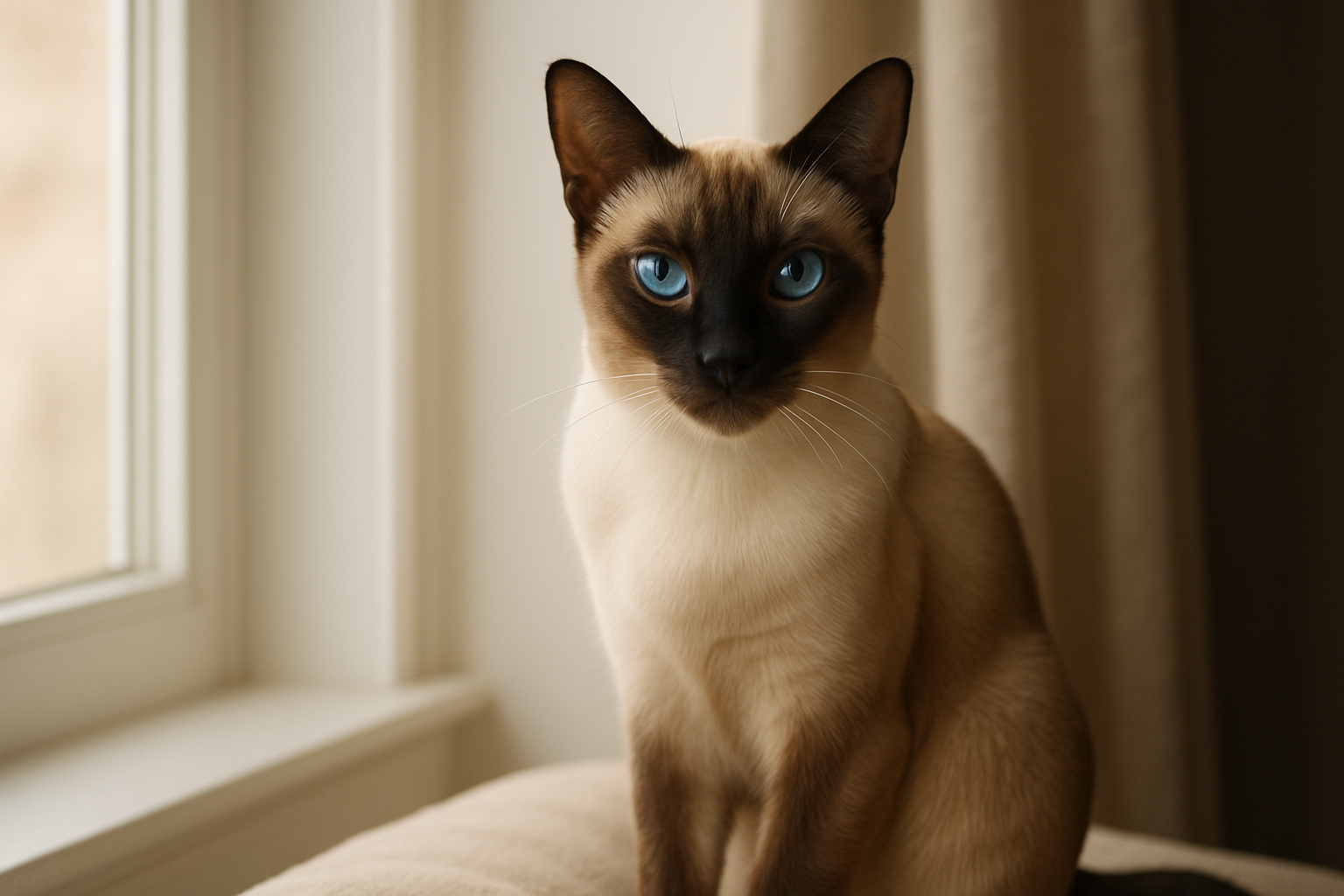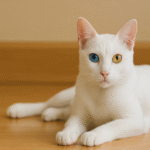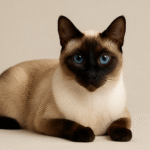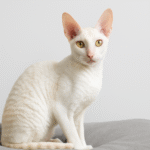Ever met a cat that talks back, follows you from room to room, and insists on being part of every conversation? That’s the Siamese. With their piercing blue eyes and sleek coats, they’re one of the most recognizable cat breeds around—and one of the most entertaining. These cats don’t just sit quietly in the corner—they want to be heard, seen, and adored.
Siamese cats are playful, people-focused, and full of personality. Whether you’re drawn to their elegant looks or their constant commentary, there’s never a dull moment with one in the house. Let’s explore what it’s like to live with a Siamese—from their favorite activities to their grooming needs, color variations, and more.
Quick Breed Facts
- Origin: Thailand (formerly Siam)
- Breed registries: CFA, TICA, GCCF, FIFe
- Weight range: 6–14 lbs
- Lifespan: 12–20 years
- Coat: Short, fine, close-lying
- Colors and patterns: Seal, blue, chocolate, lilac, lynx, tortie, red point
- Eye color: Vivid blue
- Grooming: Low
- Activity level: High
- Affection level: Very high
- Vocality: Very vocal
- Good with children: Yes
- Good with other pets: Yes (especially with socialization)
History & Origin
The Siamese cat got its start in Thailand (formerly called Siam), where it was once considered a sacred companion. These cats were so special, they were said to bring good luck—and often lived in royal palaces and temples. They made their way to the West in the late 1800s as gifts to diplomats and quickly stole the spotlight with their unusual looks and bold personalities.
As their popularity grew in Europe and the U.S., breeders began refining their features—long, lean bodies, big ears, and those signature dark points. Today’s Siamese is not only a star in its own right but also the ancestor of other breeds like the Balinese, Tonkinese, and Oriental Cat.
Siamese Cat Personality & Temperament
Siamese cats are famous for their intelligence and strong personalities. These cats are often described as “dog-like” in their loyalty—they follow you around the house, demand attention, and love to be part of everything you’re doing.
They’re also extremely vocal. Expect to hold full conversations with your Siamese; they’ll “talk back” with loud, expressive meows. While affectionate and loving, they don’t like being ignored and may become anxious or mischievous if left alone too long.
These cats thrive in homes where someone is often around or where they have a feline or canine buddy to play with.
Coat Colors & Variations
One of the coolest things about Siamese cats is their point coloration. That means their ears, face, paws, and tail are darker than the rest of their body—kind of like they’re wearing stylish accessories. These markings come from a temperature-sensitive gene, so the cooler parts of their body grow darker fur. Pretty wild, right?
There are several different point colors and patterns, each with its own unique vibe:
- Seal Point: The classic look—dark brown points with a creamy fawn body.
- Blue Point: Cool bluish-gray points with a soft white coat.
- Chocolate Point: Milk-chocolate points paired with an ivory body.
- Lilac Point: Frosty gray-pink points and a pale, almost lavender-toned coat.
- Lynx Point: Tabby-like striping on the points, often with cute “M” markings on the forehead.
- Tortie Point: A marbled mix of red and black on the points—no two cats look the same.
- Red (Flame) Point: Bright reddish-orange points with a creamy white body. Less common, but they stand out!
- Black Siamese: Not officially recognized, but some mixes look nearly black due to extra-dark seal points.
Most Siamese cats have short, fine coats. But if you’ve ever seen one with a flowy, silky look, you probably met a Balinese. They’re the long-haired version of the Siamese—with all the same personality, just more fluff.
Grooming & Shedding
Siamese cats are about as low-maintenance as it gets when it comes to grooming. Their short, sleek coats don’t tangle or mat, and they barely shed compared to fluffier breeds. A quick brushing once a week is usually plenty to keep them looking sharp.
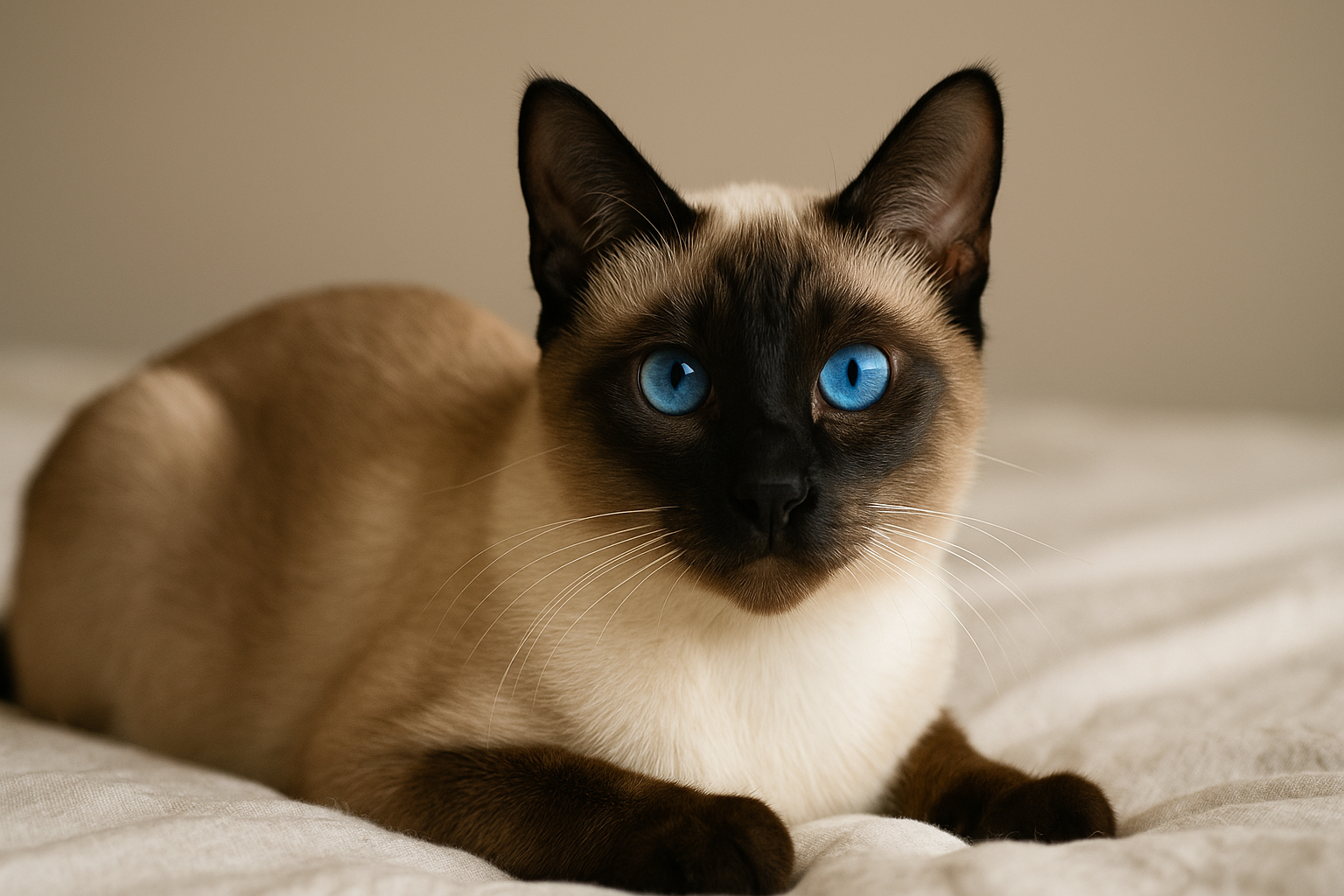
That weekly brushing isn’t just about fur—it’s also a great bonding moment. Plus, it gives you a chance to check for fleas or dry spots, especially since their coats are so close to the skin. Most Siamese cats enjoy the attention if you keep it gentle.
Unlike long-haired breeds like the Maine Coon or Ragdoll, you won’t need to fuss with detangling or heavy-duty grooming tools. A soft brush or grooming glove is more than enough to keep your Siamese smooth, shiny, and happy.
Health & Lifespan
Siamese cats are usually pretty healthy and can live a long time—many make it into their late teens or even early 20s with the right care. But like any breed, they do have a few health quirks worth knowing about.
Some Siamese—especially those with super wedge-shaped faces—can have breathing issues or persistent congestion. They’re also more likely to deal with dental problems, so keeping those teeth clean really matters.
Another thing to keep on your radar is progressive retinal atrophy (PRA), a genetic eye condition that can lead to vision loss down the road. And because of their genetics, some Siamese cats may also be at a higher risk for hyperthyroidism as they age.
But don’t worry—most Siamese live happy, healthy lives with regular vet visits, good food, and lots of play and mental stimulation. And since they’re such social creatures, they do best in homes where they get plenty of love and attention.
Activity & Play
If you’re looking for a lazy lap cat, the Siamese might not be your speed. These cats are energetic, curious, and always on the move. They love to climb, chase, play fetch (yes, really), and get into places they probably shouldn’t. Boredom isn’t just a mood for them—it’s a problem. A bored Siamese will absolutely make their own fun, whether it’s knocking things off shelves or meowing at full volume until you give in.
They do best in environments where they have puzzle toys, cat trees, window perches, and daily interaction with their humans. Many Siamese cats also enjoy learning tricks or walking on a leash, thanks to their high intelligence and eagerness to engage.
Family Compatibility
Siamese cats are true people-cats. They’ll trail you from room to room, chirping and meowing like they’ve got something important to add to the conversation. These cats form strong bonds with their families and hate being left out of the action—or left alone for too long.
They’re usually great with kids, especially ones old enough to play gently and keep up with their energy. Siamese cats can also click with other cats or even dogs, as long as the introductions are done slowly. And if you’re gone most of the day, having a second cat around can keep them from getting lonely (and too noisy!).
Whether you live alone or have a full house, a Siamese can fit right in—just be ready for lots of chatter and plenty of attention-seeking behavior.
Recommended Supplies
Siamese cats are clever, busy, and love to be part of everything you’re doing. That means you’ll want more than just the basics. Along with a cozy bed and a sturdy litter box, make sure you’ve got interactive toys, enrichment feeders, and scratching posts to keep them entertained. Without enough to do, they’ll happily invent their own “projects”—and you may not like the results!
Since they’re such social cats, consider extras like a window perch, a hammock by your desk, or even a cat backpack if you like taking them along for adventures. Siamese thrive when they feel included in your world.
Final Thoughts on the Siamese Cat
Siamese cats are as striking in personality as they are in looks. From their unforgettable blue eyes to their nonstop conversations, they bring energy and affection into any home. They aren’t the quiet, low-key type—but that’s exactly what their fans love about them.
If you’re ready for a smart, social, and sometimes demanding companion, the Siamese could be the perfect match. Just be prepared to share your space, your attention, and probably a few late-night chats with your new feline friend.
Siamese Cat FAQs
How much does a Siamese cat cost?
Siamese kittens from breeders usually range from $600–$1,200, depending on lineage, color point, and breeder reputation. Show-quality or rare variations can cost more.
Are Siamese cats hypoallergenic?
Not exactly. While they do shed less than long-haired breeds, Siamese cats still produce the proteins (like Fel d 1) that trigger allergies in sensitive people. Some allergy sufferers report fewer symptoms with Siamese cats, but it varies by person.
How long do Siamese cats live?
With good care, Siamese cats often live between 12 and 20 years. Many reach their late teens, especially if they stay indoors and get regular vet checkups.
Are Siamese cats good with kids and dogs?
Yes! Siamese cats are social, adaptable, and playful—traits that usually make them great with children and other pets. Just be sure to supervise early interactions and teach kids how to respect their space.

